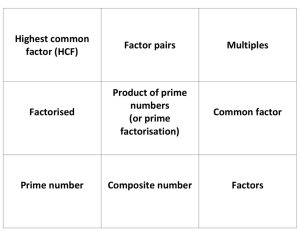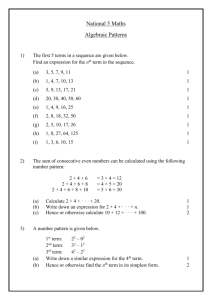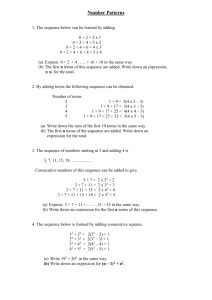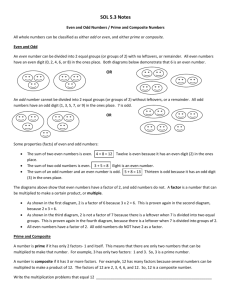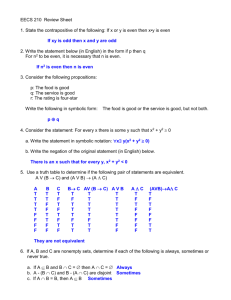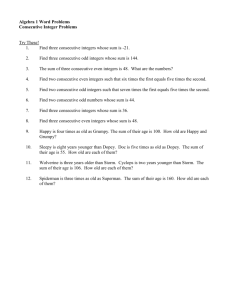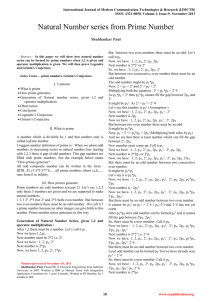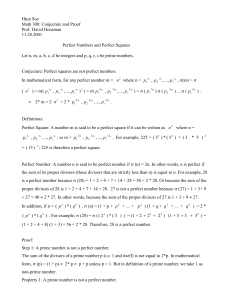ACE 4.1
advertisement
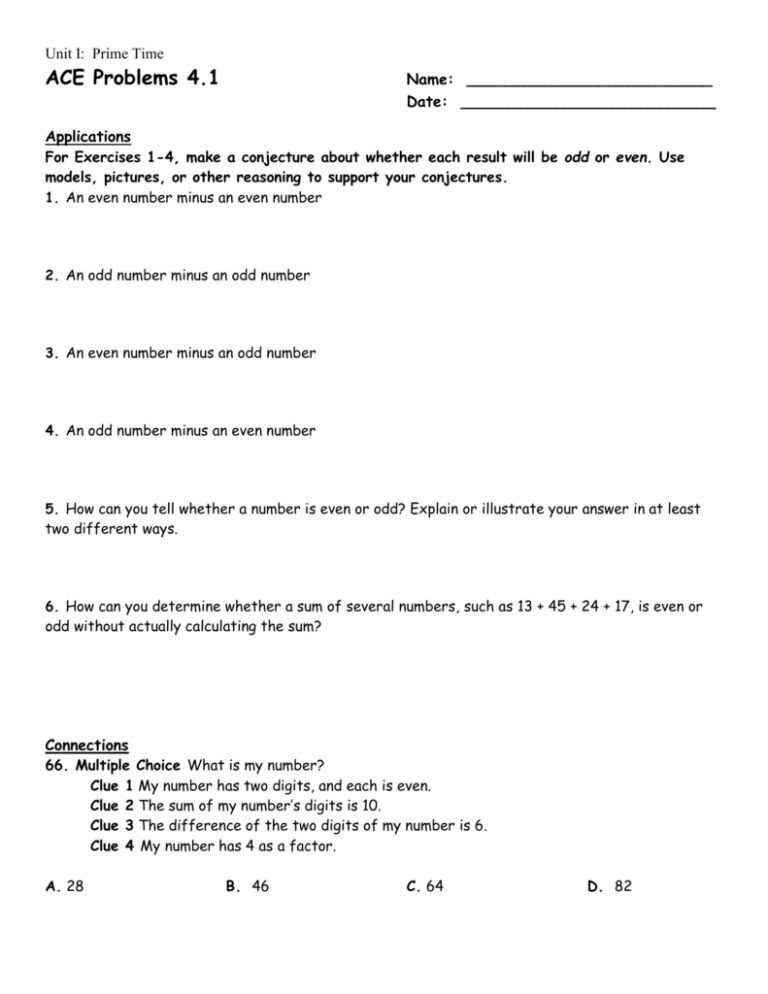
Unit I: Prime Time ACE Problems 4.1 Name: __________________________ Date: ___________________________ Applications For Exercises 1-4, make a conjecture about whether each result will be odd or even. Use models, pictures, or other reasoning to support your conjectures. 1. An even number minus an even number 2. An odd number minus an odd number 3. An even number minus an odd number 4. An odd number minus an even number 5. How can you tell whether a number is even or odd? Explain or illustrate your answer in at least two different ways. 6. How can you determine whether a sum of several numbers, such as 13 + 45 + 24 + 17, is even or odd without actually calculating the sum? Connections 66. Multiple Choice What is my number? Clue 1 My number has two digits, and each is even. Clue 2 The sum of my number’s digits is 10. Clue 3 The difference of the two digits of my number is 6. Clue 4 My number has 4 as a factor. A. 28 B. 46 C. 64 D. 82 Unit I: Prime Time Extensions 80. a. Find at least five numbers that belong in each region of the Venn diagram below. b. What do the numbers in the intersection have in common? Consecutive numbers are whole numbers in a row, such as 31, 32, 33, or 52, 53, 54. For Exercises 81-84, think of different consecutive numbers. 81. For any three consecutive numbers, what can you say about odd numbers and even numbers? Explain. 82. a. Mirari conjectures that, for any three consecutive numbers, one number would be divisible by 3. Do you think Mirari is correct? Explain. b. Gia claims that the sum of any three consecutive whole numbers is divisible by 6. Is this true? Explain. c. Kim claims that the product of any three consecutive whole numbers is divisible by 6. Is this true? Explain. d. Does the product of any four consecutive whole numbers have any interesting properties? Explain. Unit I: Prime Time 83. How many consecutive numbers do you need to guarantee that one of the numbers is divisible by 5? 84. How many consecutive numbers do you need to guarantee that one of the numbers is divisible by 6? 85. Examine the number pattern to the right. Stage 1: 1 =1 Stage 2: 1 + 3 =4 Stage 3: 1 + 3 + 5 =9 Stage 4: 1 + 3 + 5 + 7 = 16 a. Find the next four stages and their sums. b. What is the sum in Stage 20? c. In what stage will the sum be 576? What is the greatest number added in the sum of this pattern? Explain. 86. Goldbach’s Conjecture is a famous conjecture that has never been proven true or false. The conjecture states that every even number, except 2, can be written as the sum of two prime numbers. For example, 16 can be written as 5 + 11. a. Write the first six even numbers greater than 2 as the sum of two prime numbers. b. Write 100 as the sum of two primes. c. The number 2 is a prime number. Can an even number greater than 4 be written as the sum of two prime numbers if you use 2 as one of the primes? Why or why not? Unit I: Prime Time 87. The chart below shows the factor counts for the numbers from 975 to 1,000. Each star stands for one factor. For example, the four stars after 989 indicate that 989 has four factors. a. Boris thinks that numbers that have many factors, such as 975 and 996, must be abundant numbers. (Recall that an abundant number is a number whose proper factors have a sum greater than the number.) Is Boris correct? Explain. b. Doris thinks that there is at least one square number on the list. Is Doris correct? Explain.
